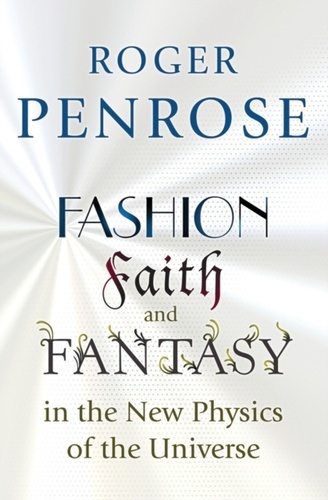Fashion, Faith, and Fantasy in the New Physics of the Universe

Editorial Princeton
Fecha de edición septiembre 2017 · Edición nº 1
Idioma inglés
EAN 9780691178530
520 páginas
Libro
encuadernado en tapa blanda
Resumen del libro
What can fashionable ideas, blind faith, or pure fantasy possibly have to do with the scientific quest to understand the universe? Surely, theoretical physicists are immune to mere trends, dogmatic beliefs, or flights of fancy? In fact, acclaimed physicist and bestselling author Roger Penrose argues that researchers working at the extreme frontiers of physics are just as susceptible to these forces as anyone else. In this provocative book, he argues that fashion, faith, and fantasy, while sometimes productive and even essential in physics, may be leading today's researchers astray in three of the field's most important areas-string theory, quantum mechanics, and cosmology.Arguing that string theory has veered away from physical reality by positing six extra hidden dimensions, Penrose cautions that the fashionable nature of a theory can cloud our judgment of its plausibility. In the case of quantum mechanics, its stunning success in explaining the atomic universe has led to an uncritical faith that it must also apply to reasonably massive objects, and Penrose responds by suggesting possible changes in quantum theory.
Turning to cosmology, he argues that most of the current fantastical ideas about the origins of the universe cannot be true, but that an even wilder reality may lie behind them. Finally, Penrose describes how fashion, faith, and fantasy have ironically also shaped his own work, from twistor theory, a possible alternative to string theory that is beginning to acquire a fashionable status, to "conformal cyclic cosmology," an idea so fantastic that it could be called "conformal crazy cosmology."The result is an important critique of some of the most significant developments in physics today from one of its most eminent figures.
Biografía del autor
x{0026}lt;P x{0026}lt;B Roger Penrosex{0026}lt;/B (Inglaterra, 1931) es uno de los pensadores y matemáticos más originales y creativos de la actualidad, probablemente el físico de mayor prestigio que ha trabajado en relatividad general desde Einstein. Sus trabajos sobre agujeros negros, gravedad cuántica y, más recientemente, la ciencia de la mente lo han convertido en una celebridad dentro del mundo científico. En 1964 entró en el Birkbeck College de Londres como profesor de matemáticas aplicadas y a partir de 1973 ocupó la cátedra de matemáticas Rouse Ball en la Universidad de Oxford. Estudioso de los agujeros negros, inventó un sistema para cartografiar los alrededores de dichos fenómenos astrofísicos. Este tipo de mapa se denomina Diagrama Penrose. También se dedicó a crear paradojas matemáticas, convirtiendo complicadísimas elucubraciones en ingeniosos puzles. Actualmente se ha volcado en el estudio de la inteligencia artificial. Ha sido distinguido, entre otros galardones, con el Premio Nobel de Física 2020 por sus contribuciones al estudio de los agujeros negros, con el Wolf Prize junto a Stephen W. Hawking, la Medalla de la Royal Society y el Premio Albert Einstein. En su bibliografía cabe mencionar x{0026}lt;I La nueva mente del emperador x{0026}lt;/I (1989), x{0026}lt;I La naturaleza del espacio y el tiempo x{0026}lt;/I (escrito en colaboración con Stephen W. Hawking, 1996), x{0026}lt;I El camino a la realidad x{0026}lt;/I (2004), x{0026}lt;I Ciclos del tiempox{0026}lt;/I (2010) y x{0026}lt;I Moda, fe y fantasíax{0026}lt;/I (2017).x{0026}lt;/P








